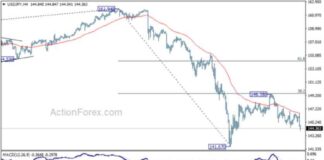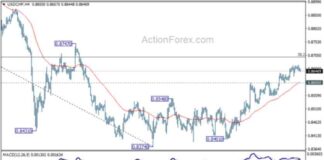Gatekeeper Stock Analysis: Understanding the Q3 Results
Gatekeeper Systems (OTCPK:GKPRF) (TSXV:GSI:CA) has recently experienced a 20% drop in share price following the release of their fiscal Q3 results. This article aims to provide a comprehensive update on the reasons behind this decline and why investors should not overreact to the short-term fluctuations in the company’s performance.
The Initial Thesis
Gatekeeper Systems is a Canadian microcap company that specializes in selling video surveillance hardware and software to municipal governments for school buses and trains. With a focus on “protecting people in transit,” the company has positioned itself in markets that have seen significant growth in recent years. The rise in demand for school bus surveillance is driven by concerns such as bullying, sexual harassment, and stop-arm violations, while the federal mandate for video surveillance in trains by 2027 further expands Gatekeeper’s market opportunities.
Owner-operator Doug Dyment, who owns 10% of Gatekeeper, has been a pioneer in the industry since the 1990s. Under his leadership, the company has achieved a 21% compound annual growth rate in revenue over the past decade, translating into bottom-line profitability. Gatekeeper reached consistent profitability in the last two years, setting the stage for accelerated earnings growth in the near future. The company is poised for an inflection point where historical revenue growth rates drive substantial profitability over the next two years.
Q3 Results Analysis
The market’s disappointment with Gatekeeper’s Q3 results, which led to a 20% decline in share price, can be attributed to slower revenue growth and a $0.5 million loss reported by the company. While these figures may raise concerns about the company’s performance, it is essential to consider the larger context. Despite the Q3 setback, year-to-date revenue is still up 27% year-over-year, indicating overall growth momentum.
The temporary slowdown in revenue growth can be attributed to the company’s strategic investments in sales and marketing. Gatekeeper increased its sales and marketing expenses by approximately 50% in Q3 to support the launch of new products, establishment of a data center for AI-based video analytics, and participation in industry trade shows across North America. These initiatives are essential for long-term growth but may result in short-term fluctuations in financial performance.
Medium-Term Prospects and Risk Assessment
Looking ahead, Gatekeeper remains on track to achieve the growth targets outlined in the initial analysis, which projected a two-year price target of $1. The recent decline in share price presents an attractive entry point for investors, considering the company’s solid balance sheet and positive free cash flow generation. Despite the inherent risks associated with microcap stocks, Gatekeeper’s low risk of insolvency and commitment to future growth initiatives provide a favorable outlook for long-term investors.
While uncertainties exist around the execution of Gatekeeper’s sales pipeline and competitive bidding process, the company’s sustained profitability and strategic investments indicate a strong foundation for future success. Investors should focus on the company’s long-term growth trajectory rather than reacting to short-term fluctuations in financial results. Gatekeeper’s position in the evolving market for video surveillance solutions and its proactive approach to innovation position it well for sustained growth in the coming years.
In conclusion, Gatekeeper Systems’ Q3 results should be viewed in the context of its broader strategic initiatives and long-term growth potential. While short-term challenges may impact the company’s financial performance, the underlying strength of its business model and market positioning support a positive outlook for investors. As Gatekeeper continues to expand its presence in the video surveillance industry and drive innovation in its product offerings, the company is well-positioned to deliver value to shareholders over the long term.

















